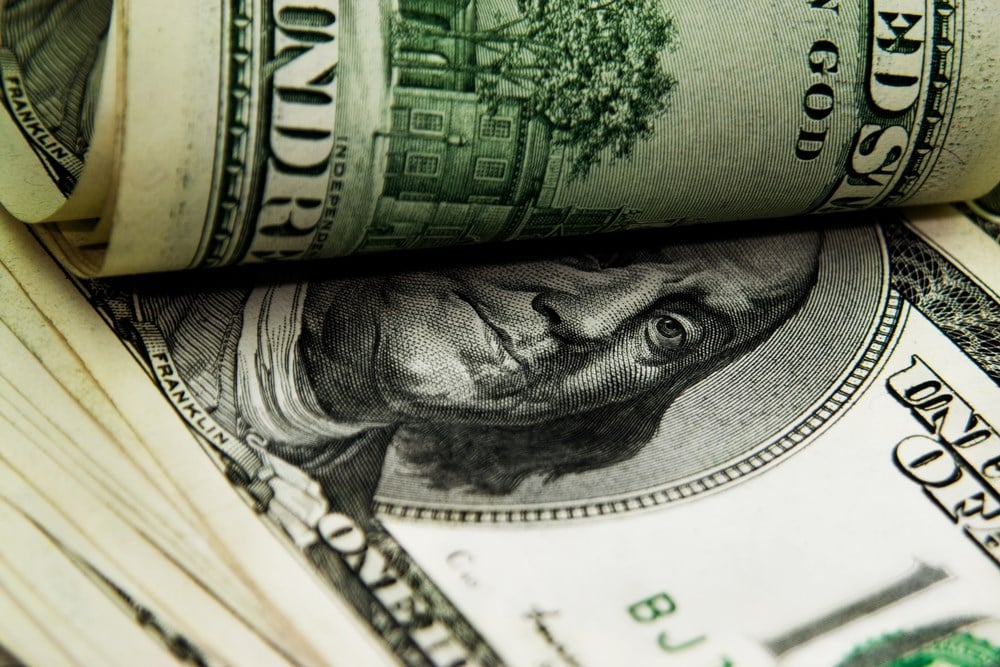
A look at the Financial Select Sector SPDR Fund (NYSEARCA: XLF) chart, you’ll see financials aren’t exactly being pummeled after S&P’s downgrade of five bank stocks.
Does that bode well for the sector, and the broader market?
In an August 24 blog post, S&P analysts said “tough operating conditions” are straining certain U.S. regional banks, but added that most ratings outlooks remain stable.
The financials sector is down 0.61% in the past five sessions, but it’s holding up better than consumer staples and health care during that time frame.
The biggest U.S. banks, JPMorgan Chase & Co. (NYSE: JPM), Bank of America (NYSE: BAC) and Morgan Stanley (NYSE: MS), were not subject to S&P’s downgrades, although all are trading lower for the week.
Moody's Previously Downgraded Banks
S&P’s downgrades followed fellow ratings agency Moody’s action to cut the ratings of 10 small and midsized financial institutions, citing increased risks that could slash profit margins. Agencies began taking notice after the collapse of Silicon Valley Bank in March.
Beyond that, the market for loans has changed since the Federal Reserve began increasing interest rates last year. With interest rates higher, banks are forced to pay more interest to attract deposits. Meanwhile, the value of bonds purchased not that long ago, when rates were lower, has declined.
That puts banks in a tough spot, as they are being squeezed from two different directions.
In addition, deposit levels have declined, weighing on banks’ liquidity.
Banks' Securities Value Declining
Meanwhile, according to S&P Global Ratings, the value of securities held by banks, which make up a large part of their liquidity, has declined.
“We estimate that FDIC-insured banks had more than $550 billion of unrealized losses on their available-for-sale and held-to-maturity securities as of June 30, 2023,” said S&P’s analysts.
They noted that “while many measures of asset quality still look benign, higher rates are pressuring borrowers, and nonperforming assets, delinquencies, and charge-offs are rising toward at least their historical averages.”
S&P added that it still expects further deterioration of banks’ asset quality. In particular, it sounded the alarm regarding commercial real estate. While retail spaces are a bright spot, office buildings remain at low occupancies, and office tenants are downsizing or not renewing leases as employees continue to work from home.
5 Banks With Lowered Outlooks
S&P lowered its ratings on five banks, all of which had been on negative outlooks, by one notch. It’s worth noting that it assigned stable outlooks to all five, meaning analysts were concerned, but not panicked.
“We reviewed these 10 banks because we identified them as having potential risks in multiple areas that could make them less resilient than similarly rated peers,” S&P said.
Those risks include greater deterioration in funding, below-peer profitability, high unrealized losses on their assets, or meaningful exposure to commercial real estate. S&P noted that not all banks had risks pertinent to each of those factors.
Market Risk If Financials Keep Declining
For depositors, it’s important to remember that the Federal Deposit Insurance Corporation insures deposits up to $250,000. While plenty of investors hold that much cash, or more, in money market funds at brokerages, very few individuals or couples keep $250,000 in cash at a bank, meaning the vast majority of depositors’ money is safe and sound.
For investors, the biggest question is: Can the broader market resume its rally if financials don’t participate?
The financial sector comprises around 12.4% of S&P 500 market capitalization, behind only info tech and healthcare, in weighting. It would be difficult for the index to stage a strong rally without financials trending upward.
In the S&P’s rally that began in mid-March and lasted through late July, the financial sector rallied about 10%, contributing to the overall market return. A sector that large could drag down the market if it declines, and banks’ woes could reverberate to companies trying to borrow to fund their own growth.













